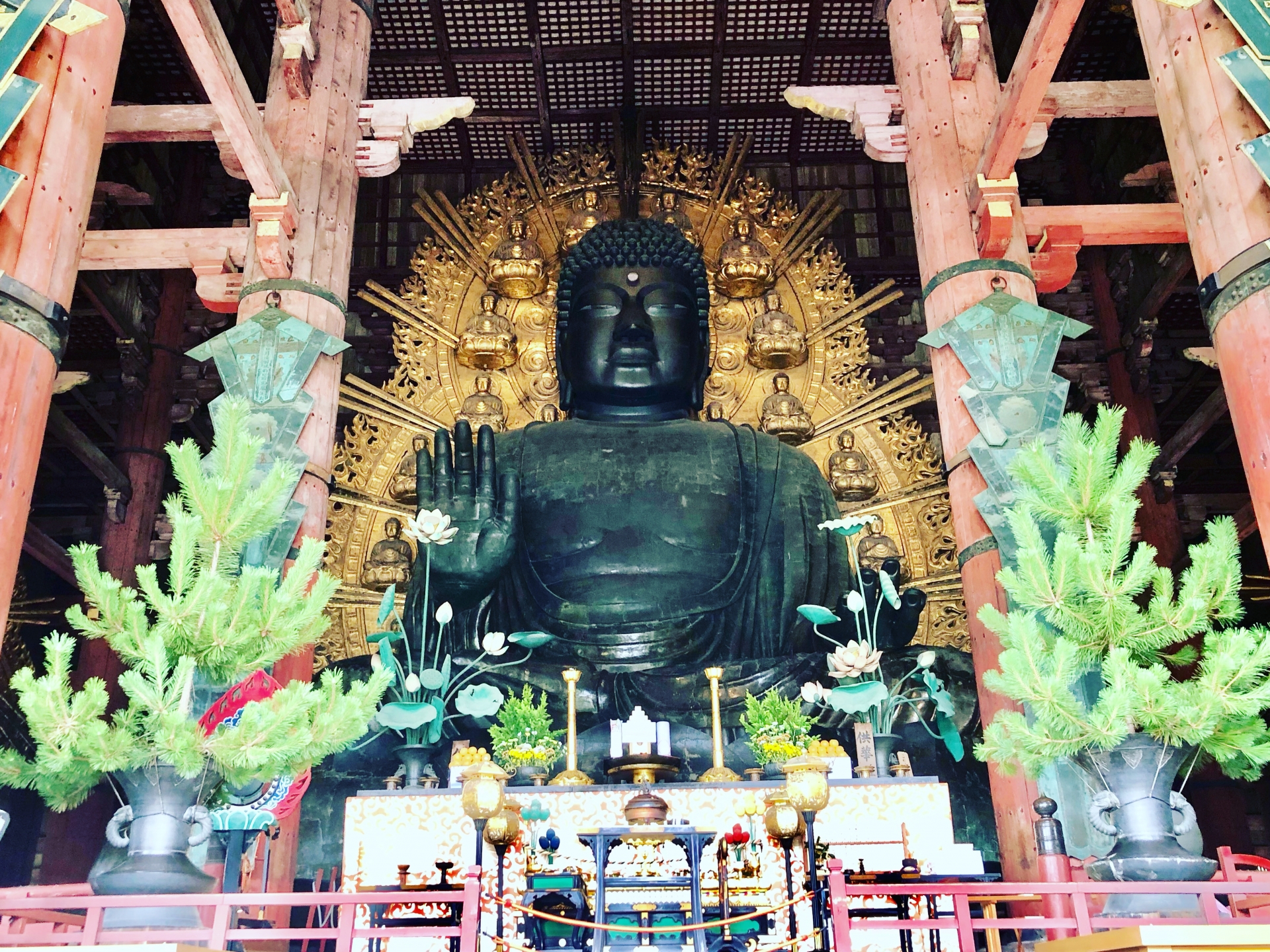- Discover Nara: A Journey Through Japan’s UNESCO Sites and Cultural Treasures
- The weight of history and the power of the Great Buddha at Todaiji Temple
- Feel the harmony at the fantastic Kasuga Taisha Shrine
- Experiencing the rise of Buddhism at Kofukuji Temple
- Enjoying Symbiosis with Deer in Nara Park
- Learn about history at Todaiji Museum
- Passing on Nara’s History and Nature to the Future
Discover Nara: A Journey Through Japan’s UNESCO Sites and Cultural Treasures
Nara is one of the most historically and culturally rich regions in Japan, boasting the elegance of an ancient capital and its heritage.
In this article, we will take an in-depth look at Nara’s representative historical sites, their backgrounds, and the points that resonate with the Japanese people.
We will provide you with all of Nara’s charms, so please stay with us until the end.
The weight of history and the power of the Great Buddha at Todaiji Temple
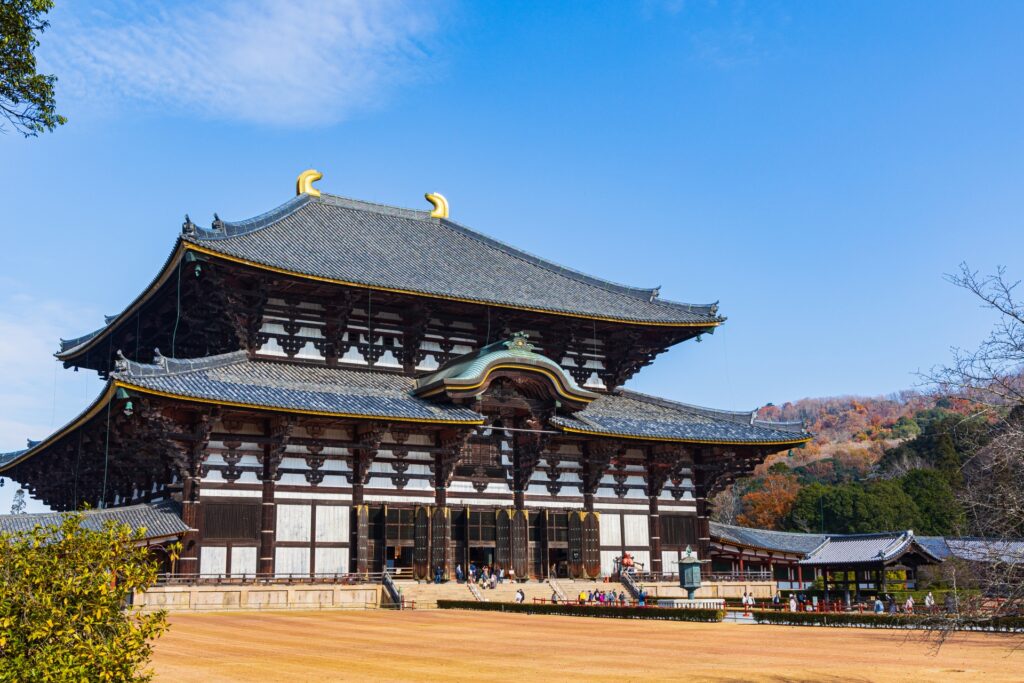
Todaiji Temple is the center of Buddhism in Japan and a symbol of Nara-era culture.
The key to understanding why this place is so special lies in its history, architecture, and the presence of the Great Buddha.
First, let’s talk about the Great Buddha Hall, the face of Todaiji Temple.
This building is renowned as one of the largest wooden structures in the world and is recognized as a national treasure.
The 15-meter-high Daibutsuden has a presence that is overwhelming to behold and is one of the reasons why so many people visit the temple.
The Daibutsu was first completed in 752, but has since been repeatedly lost and rebuilt due to numerous disasters.
Although the existing Daibutsu was rebuilt, its massive form continues to convey a message from the past.
Through all these historical changes, the Daibutsu still looks as it did in the past, and it still speaks deeply to people today.
Another highlight of Todaiji Temple is the Nandaimon Gate.
The A-Un statue of Kongorikishi, said to have been created by Unkei and Kaikei, welcomes visitors inside the gate.
This place is not only a cultural asset, but also technically very valuable and a place where one can feel the best of Japanese Buddhist architecture.
As you tour Todaiji Temple, nothing can compare to the moment when you experience the depth of its history and ponder the richness of Japanese culture.
Feel the harmony at the fantastic Kasuga Taisha Shrine
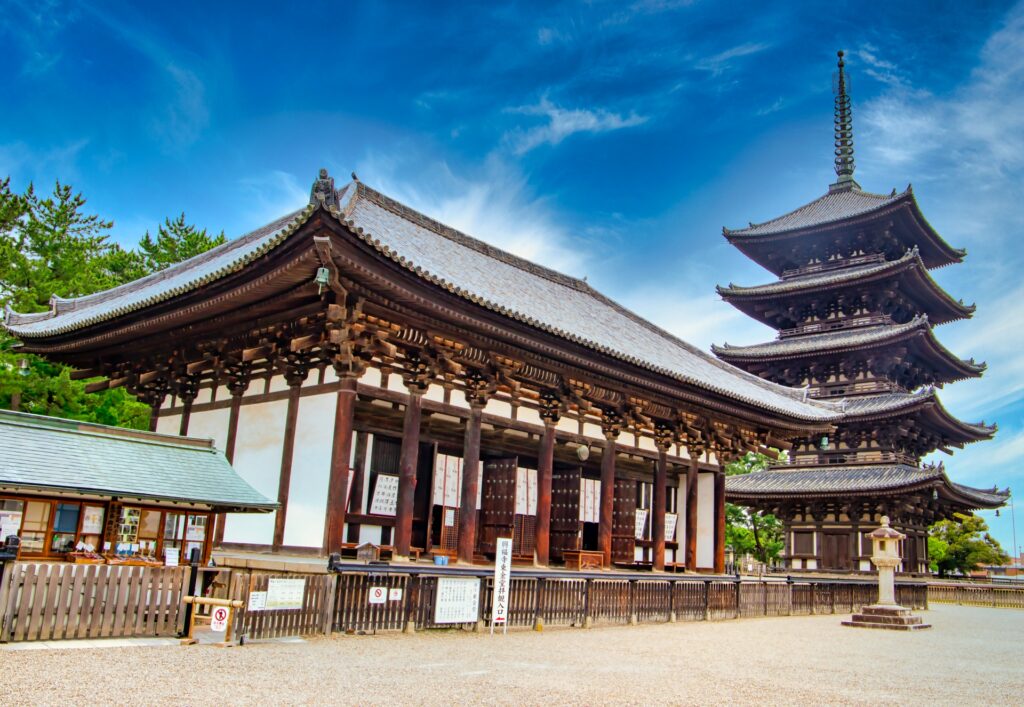
The Kasuga Taisha Shrine symbolizes the fusion of rural beauty and urban culture.
This is a popular place to enjoy not only the history of Japan, but also the natural beauty of Nara.
Established by the Fujiwara clan, the shrine is a legacy that speaks of Japan’s ancient origins, yet it is still loved by many people.
The bright vermilion color of the shrine pavilions brightens the hearts of visitors, and its unique atmosphere is unforgettable once you visit.
Another must-see when visiting Kasuga Taisha is the primeval forest that surrounds it.
The space where untouched nature has been preserved intact for more than 1000 years is truly sacred and a point of much mystery.
In addition, there are many deer living around Kasuga Taisha Shrine.
These deer are the symbol of Nara, and are cherished as messengers of the gods.
When you visit, be sure to see the deer.
The unique scenery of Nara will softly embrace your heart.
Experiencing the rise of Buddhism at Kofukuji Temple
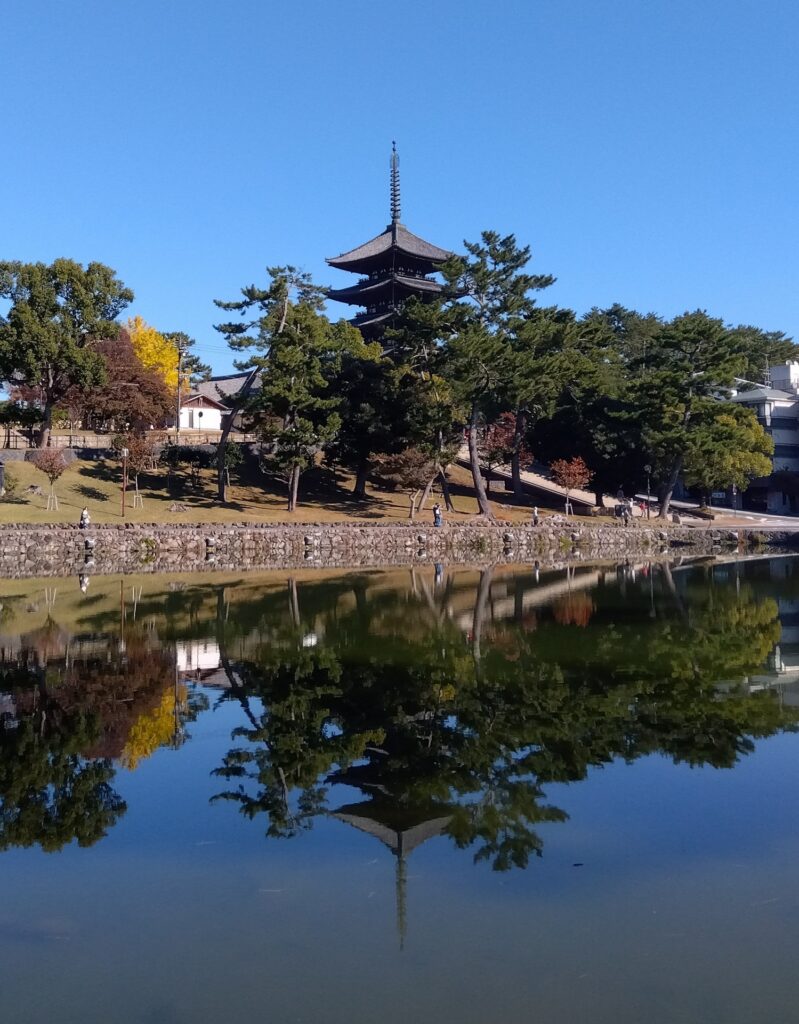
Kofukuji Temple is one of the core temples of Buddhism in Nara and is home to many national treasures.
Here you can feel the deep history of Buddhism in particular and the breath of its culture.
One of the most notable buildings is the Chukondo, which was rebuilt after its loss during the Edo period.
This restored form is here and continues to impress visitors.
Another point of interest at Kofukuji Temple is the numerous national treasures and Buddhist statues housed on its grounds.
The five-story pagoda in particular, a national treasure, offers many visitors an opportunity to appreciate the beauty of Japanese Buddhist architecture and to see its magnificent form up close.
Kofukuji Temple has continued to play a central role in Buddhist culture during the Nara period.
This is a must-visit spot, not only for professional study, but also for the enjoyment of the general visitor, and a place that showcases the diversity of Japanese Buddhist culture and its fascinating attractions.
Enjoying Symbiosis with Deer in Nara Park

If you visit Nara, you should never miss Nara Park.
This vast park offers a wonderful blend of nature and history, providing visitors with a peaceful moment.
In particular, the sight of deer roaming freely will not only make you feel that you are visiting, but will also soothe you.
Nara Park is not only a place for sightseeing, but also an important relaxation spot for local people.
On holidays, many families can be seen enjoying themselves with deer crackers.
It is a unique feature of Nara that wild animals can coexist so close to people.
However, while fascinating, caution is also needed.
Although the deer are friendly, small deer are very cautious and sometimes behave dangerously when startled.
When visiting, be gentle with the deer and try not to overstimulate them.
And here again, Nara Park, where nature and history are in harmony and visitors are warmly welcomed, is a place you will want to visit again and again.
Learn about history at Todaiji Museum

The Todaiji Museum, located near Todaiji Temple, is a great place to learn about Nara’s history and culture.
The items on display are all historical artifacts that were actually used and are a sight to behold.
While admiring their beauty, visitors can also experience the flow of Japanese history here.
Through the exhibits, visitors can get a sense of how developed the lifestyle, technology, and culture of the Nara period were.
The many ancient Buddhist statues and artifacts on display will take your breath away with their exquisite workmanship.
The experience of feeling the sound of time flowing through the land of Nara and witnessing the currents of a great civilization is unique here.
Visitors will learn something new about Japan’s history and reconfirm its depths through their experience here.
Passing on Nara’s History and Nature to the Future
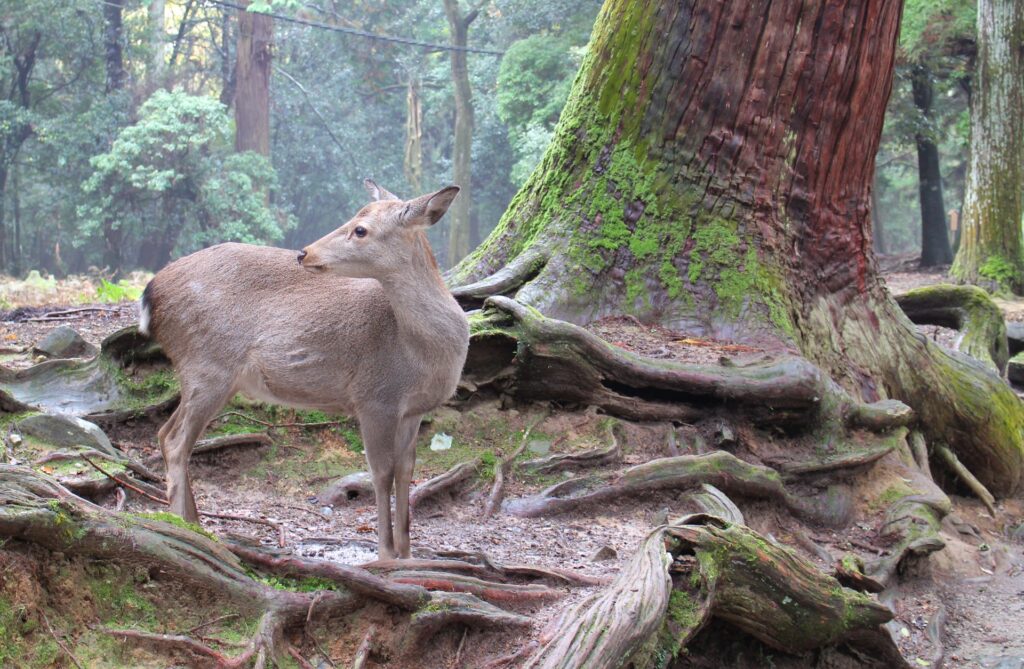
As you can see, Nara is a region where rich history and beautiful nature coexist in perfect harmony.
Every time you visit, you will discover something new and have a heart-warming experience.
The charm of such Nara will be passed on to the future not just as a tourist attraction, but as a heritage that the Japanese people should be proud of.
How can we continue to protect places like Nara and hand them down to the next generation into the future?
It is important for each of us to recognize its importance and be prepared to take on this responsibility while rejoicing together in our history and culture.
I urge you to visit Nara on your next vacation and feel these wonderful cultural assets in your heart and in your eyes.
And when you return home, share your excitement with your family and friends, so that together we can pass on Nara’s charms to the next generation.

